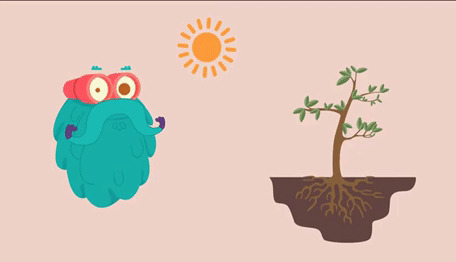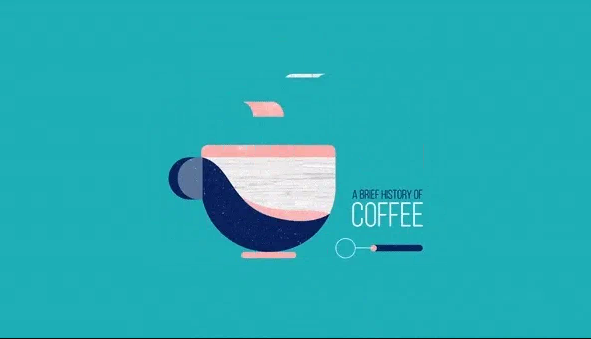Embracing the World of 2D Animation Podcasts: A Comprehensive Guide

Introduction
Welcome to the fascinating world of 2D Animation Podcasts! In this blog post, we’ll dive deep into the mesmerizing universe of podcasts dedicated to 2D animation. Whether you’re an animator, a student, an enthusiast, or just curious about the art form, this comprehensive guide is tailored to enrich your understanding and appreciation of 2D animation.
The Magic of 2D Animation Podcasts
What Makes Them Special?
- Connection with Industry Experts: These podcasts often feature interviews with seasoned animators, offering invaluable insights.
- Learning Opportunities: They serve as an educational platform, discussing techniques, trends, and tools.
- Community Engagement: Podcasts create a community of like-minded individuals, fostering discussion and collaboration.
Popular Podcasts to Check Out
- The Animation Show: Focuses on industry trends and artist interviews.
- Sketch to Screen: Offers a behind-the-scenes look at creating 2D animations.
- Frame by Frame: Analyzes famous 2D animations and discusses the creative process.
Understanding the Basics
- History of 2D Animation: Learn about its evolution from traditional cel animation to digital.
- Key Techniques: Explore the fundamentals like keyframing, tweening, and onion skinning.
- Software and Tools: Get to know the software that brings life to 2D animations, like Adobe Animate and Toon Boom Harmony.
The Art of Storytelling
- Narrative Techniques: Discover how 2D animations tell compelling stories through visuals.
- Character Development: Understand the importance of character design in driving the narrativ
- Visual Aesthetics: Learn about the role of color, composition, and style in 2D animation.
Exploring Genres in 2D Animation
Delving into the world of 2D animation, one discovers a rich tapestry of genres, each offering unique storytelling possibilities and artistic expressions. 2D animation isn’t just a medium; it’s a diverse landscape of genres, each with its own flavor and audience. In this section, we’ll explore various genres within 2D animation, highlighting how each genre is distinctively portrayed and appreciated in the world of animation podcasts.
The Comedy of Animation
- Characteristics: Comedy in 2D animation often revolves around exaggerated expressions, humorous scenarios, and witty dialogue.
- Podcast Insights: Animation podcasts frequently discuss how comedic timing is crucial in this genre. They might analyze iconic comedic animations, dissecting how visual gags and character dynamics create humor.
- Examples to Explore: Classic cartoons like “Looney Tunes” or modern shows like “Rick and Morty” demonstrate the range of comedy in 2D animation.
Drama and Emotional Depth
- Characteristics: Dramatic 2D animations delve into complex narratives, character development, and often tackle serious themes.
- Podcast Discussions: Podcasts may focus on the storytelling aspects, discussing how 2D animations convey emotions through art style, color palettes, and character expressions.
- Examples to Explore: Studios like Studio Ghibli are renowned for their dramatic and emotionally rich animations, such as “Spirited Away.”
Fantasy and World-Building
- Characteristics: This genre stands out for its imaginative worlds, mythical creatures, and magical narratives.
- Podcast Coverage: Discussions might revolve around world-building techniques in 2D animation, and how animators create immersive fantasy worlds.
- Examples to Explore: “Adventure Time” is a prime example, known for its unique, surreal world and imaginative storytelling.
Action and Adventure
- Characteristics: Fast-paced sequences, high-stakes scenarios, and dynamic character movements define this genre.
- Podcast Analysis: Action sequences in 2D animation and how they are choreographed and rendered are often topics of interest in podcasts.
- Examples to Explore: Animations like “Samurai Jack” demonstrate the use of pacing, framing, and motion to create thrilling action sequences in a 2D format.
Horror and Mystery
- Characteristics: This genre leverages eerie atmospheres, suspenseful storytelling, and sometimes, elements of the supernatural.
- Podcast Focus: Discussions often revolve around how animators use color, shadows, and sound to build tension and horror in 2D animation.
- Examples to Explore: “Over the Garden Wall” is an excellent example of a 2D animation that skillfully blends mystery with a dark, fairy-tale aesthetic.
Educational and Informational
- Characteristics: These animations are designed to inform and educate, often targeting younger audiences or focusing on specific topics like history or science.
- Podcast Exploration: Podcasts might discuss the challenges of balancing informational content with engaging storytelling in 2D animation.
- Examples to Explore: Series like “Magic School Bus” exemplify how 2D animation can make learning fun and visually engaging.
Satire and Social Commentary
- Characteristics: This genre uses humor and irony to comment on social, political, or cultural issues.
- Podcast Discussions: Animators and experts on podcasts may discuss how satire in animation is crafted, and its impact on viewers and society.
- Examples to Explore: “The Simpsons” is a notable example, known for its satirical take on a typical American family and society at large.
Exploring Cross-Genre Animations
- Discussion Point: Many 2D animations blend elements from multiple genres, creating unique and innovative storytelling experiences.
- Podcast Analysis: Episodes may dissect how different genres are combined in certain animations, what works, and the challenges involved.
The Technical Side of 2D Animation
Exploring Animation Software
- Adobe Animate: A versatile tool for vector-based animations.
- Toon Boom Harmony: Widely used in the industry for its advanced rigging and animation capabilities.
- OpenToonz: A free, open-source option preferred by many indie animators.
Animation Techniques and Tips
- Rigging for Efficiency: How to use rigs to streamline the animation process.
- Smooth Motion: Techniques for creating fluid and natural movements.
- Creative Challenges: Overcoming common hurdles in 2D animation.
The Table of Trends: Current and Future Outlook
| Year | Trend in 2D Animation | Podcasts Highlighting the Trend |
| 2023 | Rise of Indie Animators | Indie Animation Insights |
| 2024 | Virtual Reality in 2D | VR Animation Revolution |
| 2025 | AI and Machine Learning | AI in Animation |
How to Analyze and Critique 2D Animations
Analyzing and critiquing 2D animations is an art in itself, requiring a keen eye for detail and a deep understanding of animation principles. This section aims to guide enthusiasts, students, and professionals in the process of effectively analyzing and critiquing 2D animations, enhancing their appreciation and understanding of this dynamic medium.
Understanding the Basics of Animation
Before delving into analysis, it’s crucial to have a foundational knowledge of animation principles. These include the 12 basic principles of animation introduced by Disney animators Ollie Johnston and Frank Thomas, such as squash and stretch, anticipation, staging, and timing. A solid grasp of these principles enables a more informed critique of how effectively an animation uses them.
Storytelling and Narrative Structure
- Plot Analysis: Examine the storyline for coherence, originality, and emotional impact. Does the story flow logically? Is it engaging and captivating?
- Character Development: Analyze how characters are introduced and developed throughout the animation. Are they relatable and well-rounded? Do they undergo significant growth or change?
Visual Aesthetics and Style
- Art Design: Look at the overall design of the animation. This includes character designs, backgrounds, color schemes, and how these elements complement the story’s tone.
- Consistency: Evaluate the consistency in the visual style. Inconsistencies can distract viewers and detract from the overall impact of the animation.
Animation Techniques
- Movement and Timing: Focus on how movements are executed. Are they fluid and realistic (or stylistically coherent)? Assess the timing of movements and how they contribute to the overall feel of the animation.
- Use of Space and Perspective: Observe how the animation utilizes space. Good use of perspective and spatial awareness can greatly enhance the believability and impact of a scene.
Sound Design
- Audio Sync: Check if the sound effects and voice acting are well-synced with the visual elements.
- Music and Sound Effects: Analyze how the music and sound effects contribute to the mood and storytelling. Are they enhancing the viewing experience?
Technical Execution
- Frame-by-Frame Analysis: Sometimes, examining individual frames can reveal the attention to detail and craftsmanship in the animation.
- Software and Tools: Consider the tools and software used and how they’ve been utilized to achieve the final product.
Contextual Understanding
- Genre-Specific Criteria: Different genres have different expectations. For instance, a comedy might prioritize timing and expression, while a drama might focus more on emotional depth and character arcs.
- Cultural Context: Understanding the cultural background of an animation can provide insights into its themes and storytelling techniques.
Constructive Criticism
- Balanced Feedback: Offer a balanced view that appreciates the strengths while constructively pointing out areas of improvement.
- Specific Examples: Use specific scenes or elements as examples to back up your critique. General statements are less helpful than detailed observations.
Engaging with the Animation Community
- Discussion and Comparison: Engage in discussions with other animation enthusiasts or professionals. Comparing notes and perspectives can provide a deeper understanding.
- Podcast Insights: Listen to animation podcasts where experts critique and analyze animations. This can offer new viewpoints and enhance your analytical skills.
Keeping an Open Mind
- Subjectivity in Art: Remember that animation, like all art forms, can be subjective. What is considered good by one person may not be considered good by another. Keep an open mind to different styles and narratives.
- Evolution of Trends: Be aware of evolving trends and techniques in the animation industry. This helps in understanding the context in which a particular animation was created.
Impact of 2D Animation Podcasts on Industry and Education
Industry Insights
- Career Development: How these podcasts help professionals stay updated and evolve.
- Networking Opportunities: Facilitating connections within the animation community.
Educational Perspectives
- Learning Resources: Podcasts as a supplementary educational tool.
- Inspiration for Students: Encouraging the next generation of animators.
Personal Stories: Interviews with Podcast Hosts and Listeners
- Host Perspectives: Insights on creating content that engages and informs.
- Listener Experiences: How these podcasts have influenced their careers and passion for animation.
Conclusion
2D Animation Podcasts offer a treasure trove of information, inspiration, and industry insights. Whether you’re a seasoned professional or an aspiring animator, these podcasts can be an invaluable resource in your journey. They not only keep you updated on the latest trends but also connect you with a global community of animation enthusiasts. So, plug in your headphones and start exploring this dynamic and creative world!
Remember, the key to benefitting from these podcasts is consistent engagement and applying the learnings to your work or studies. The world of 2D animation is ever-evolving, and staying informed is crucial. Happy listening, and may your animation journey be as vibrant and dynamic as the animations you create!
FAQs
Q 1: What are the best 2D animation podcasts for beginners?
A 1: Frame by Frame, Sketch to Screen, and Animation Basics are great for those starting out. They cover fundamental concepts and offer easy-to-understand insights.
Q 2: How often should I listen to 2D animation podcasts to stay updated?
A 2: Listening weekly is ideal, as it helps keep you abreast of the latest trends and tips in the industry.
Q 3: Can 2D animation podcasts help in improving my animation skills?
A 3: Absolutely! They provide valuable tips, industry insights, and real-world examples that can enhance your skill set.
Q 4: Are there any podcasts that focus on the business aspect of 2D animation?
A 4: Yes, podcasts like The Business of Animation offer insights into the commercial side of the industry, including marketing and client relations.
Q 5: Do these podcasts cover the technical aspects of animation software?
A 5: Many podcasts delve into the technicalities of popular animation software, providing tutorials and tips for effective use.






















